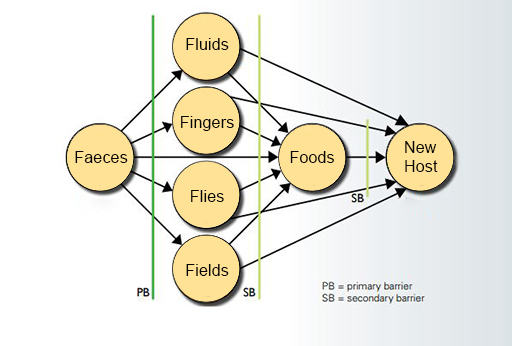2.2 The role of sanitation and hygiene
As you saw in the previous section, pathogens can be transmitted indirectly by the faecal–oral route. Faecal–oral transmission occurs when unclean hands, food or other objects contaminated by faeces enter the mouth. These different faecal–oral transmission routes are illustrated by the ‘F-diagram’ (Figure 6).
Transmission by these routes can be stopped (or reduced) by sanitation and hygiene barriers (Figure 6).
- A
primary barrier prevents the initial contact with faeces. This includes improving access to toilets to separate faeces from the environment and washing hands after going to the toilet. - A
secondary barrier prevents infectious pathogens being eaten by the new host. This includes using a clean water source, washing hands before preparing or consuming food, and covering food.
Next, you will look at how these hygiene barriers can be used to lower antibiotic demand and reduce unnecessary use.

